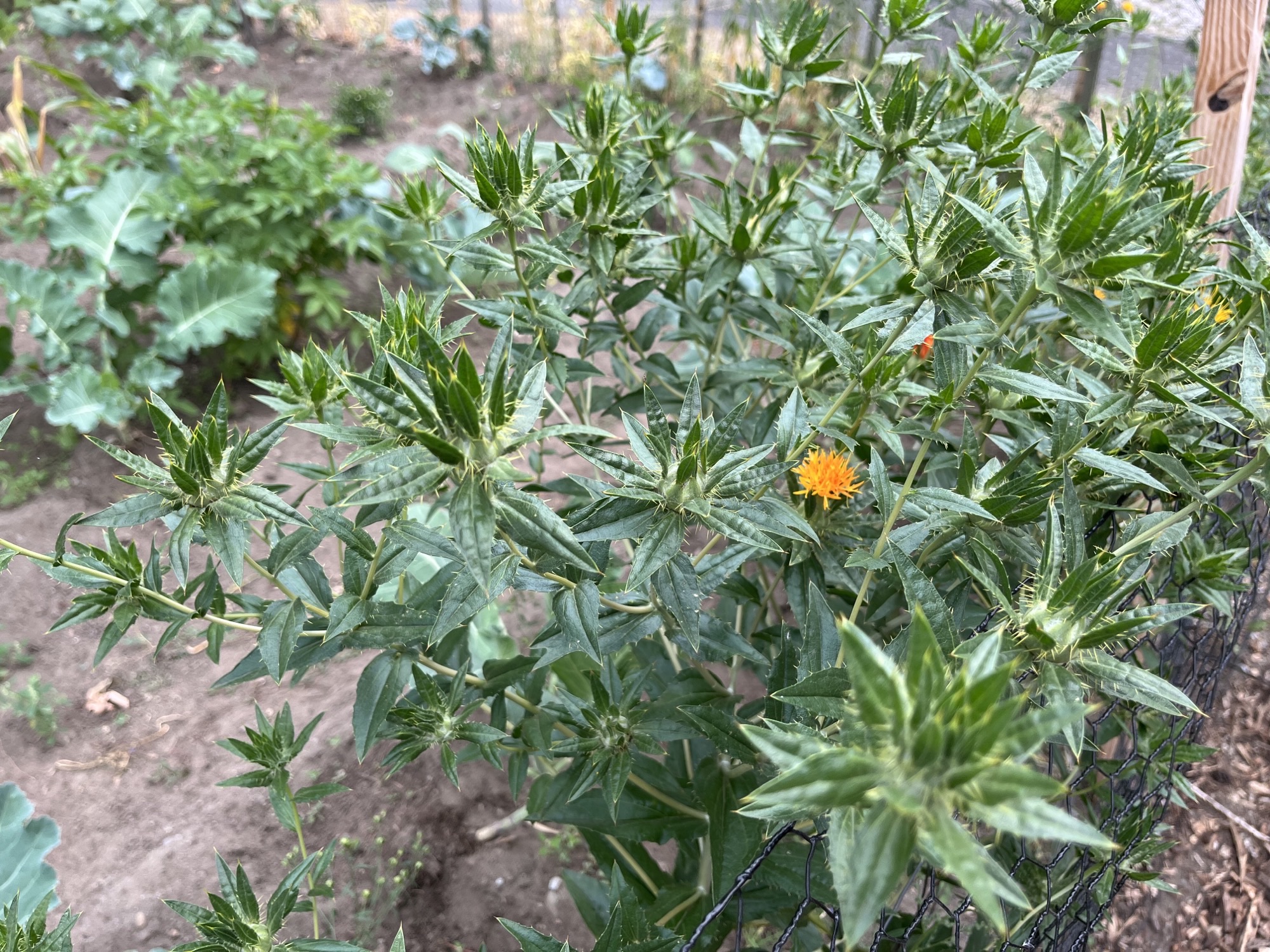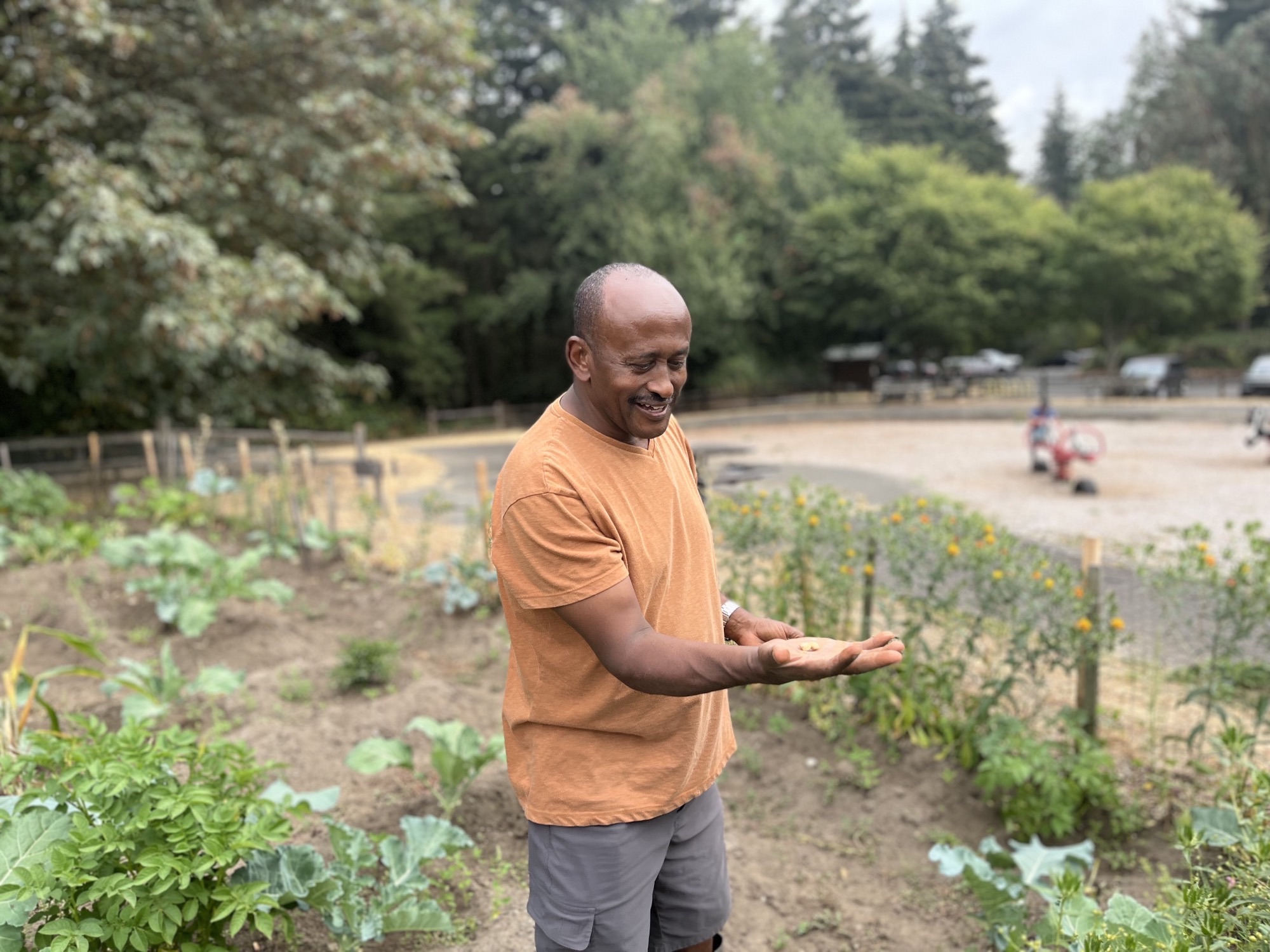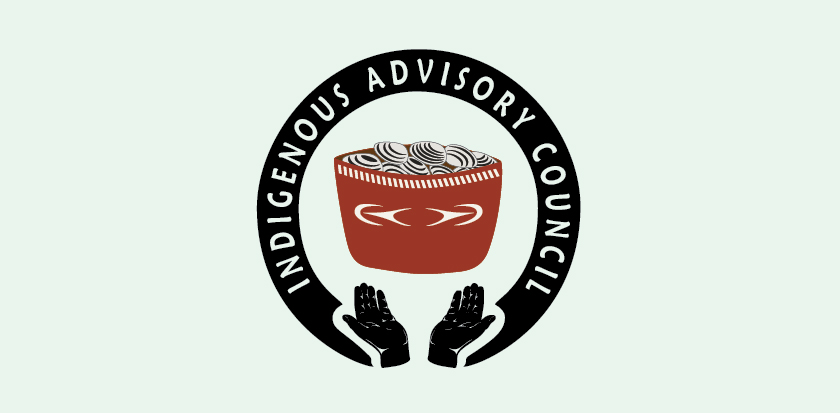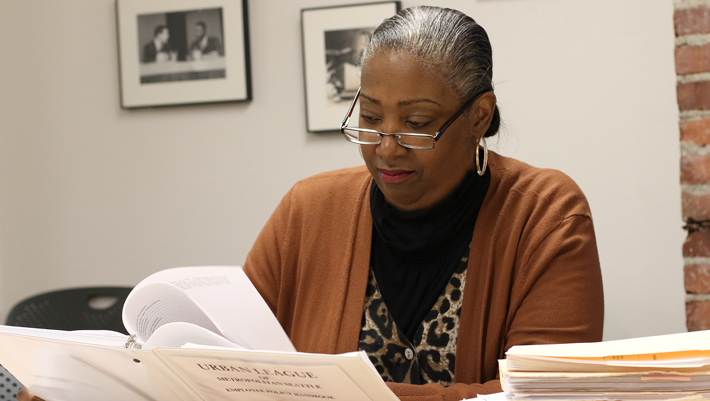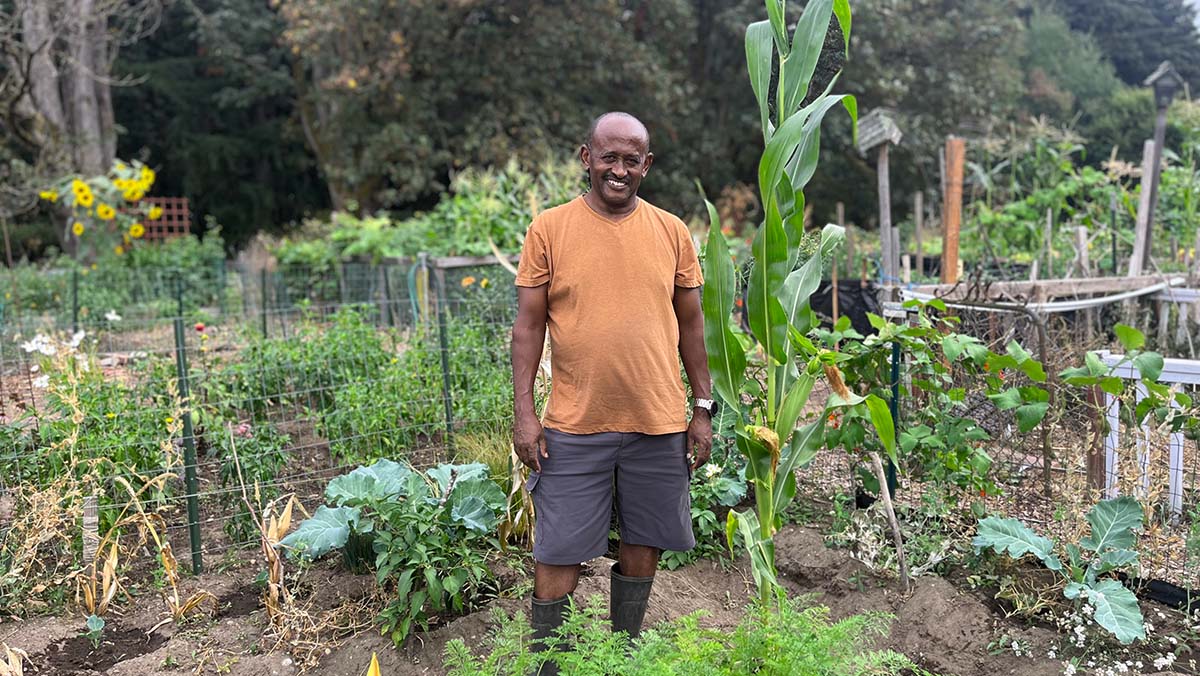
Girma Toke, Westcrest P-Patch
How long have you been gardening at the Westcrest P-Patch?
I am from Ethiopia and have been here in Seattle for six years. I have been at the garden for two years. At the beginning of the Coronavirus pandemic, I was laid off from my work. Me and my son liked to walk around outside where there weren’t a lot of people. We came here and we saw so many different vegetables and plants and we were surprised. I am new to the country so when we saw this we became very excited. I thought any farming done here would be done in people’s living areas, on their property. I’ve never seen anything like this. We thought at that time that maybe this was for citizens, not for us.
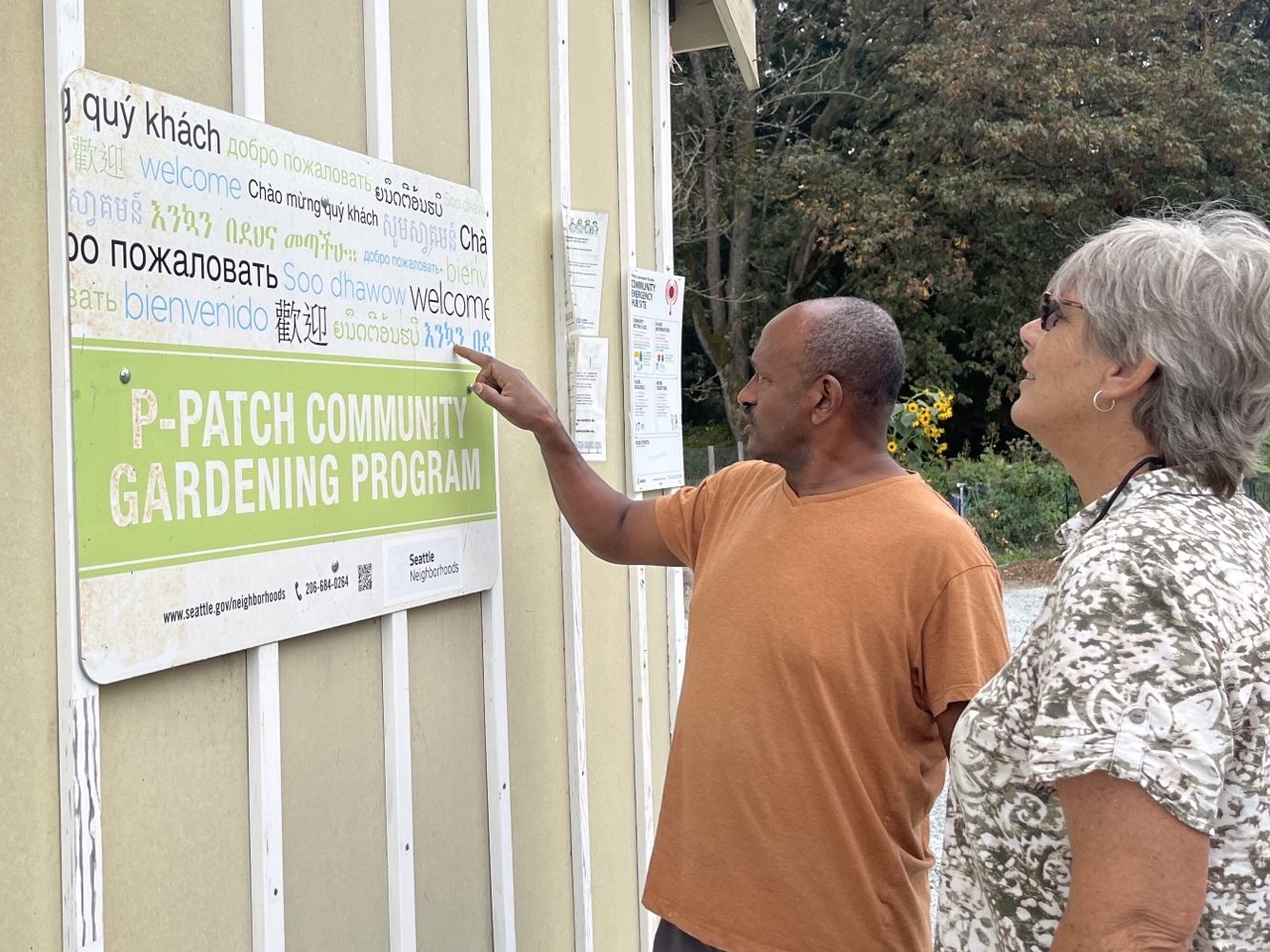
We came to the shed and we see the sign with our language on it, saying “Welcome!” It says welcome in my language! We thought, “what!? Is this for anybody, for all community?” Then we saw the website and thought we would ask, just to try and if we get in, we will be happy. I didn’t have work and it would be nice way to spend time. The month was May 2020, and we got a reply that said we could come to a gathering with all the gardeners. So we came and thought, “What’s going on? Is this true, can they give me a garden space?” We thought it would require some residential permit or papers like that. We don’t have papers yet. We are waiting for the government, so we were scared. Julie welcomed us and asked if we needed a plot of land to garden. There were a few plots that people had started planting and left. She [Julie] showed them to me and this was the one [pointing to garden plot].
Did you grow food in Ethiopia?
Yes, I have a lot of experience, but it is not small like this. We use oxen and have a traditional plowing method. Most of the time we grow teff, it is the unique seed to my country. Now in America, South Africa, Australia – all the places my people are living – it is grown commercially. We make it into a flat bread, called injera. There is also wheat and corn. Corn is the most famous, it is grown in every corner of Africa. They crush it before it is dry, but not by blender, it is crushed by hand, and it is used to make many different items of food that are very tasty. Some other crops like sorghum and another seed that grows like corn but it is more like sugar cane. We use the juice, so we cut the stem and take the cover and chew it to get the juice, and throw the hard part out. That is something that is very common in Africa, but I don’t see it here. It is very sweet! Like candy, but sweeter than candy and juicy. In my country, we use rainwater only, no hoses like this. It rains once and the soil absorbs the water for a long period of time. Water like this is for drinking only because it is very expensive.
Are there any plants you like to grow that remind you of home?
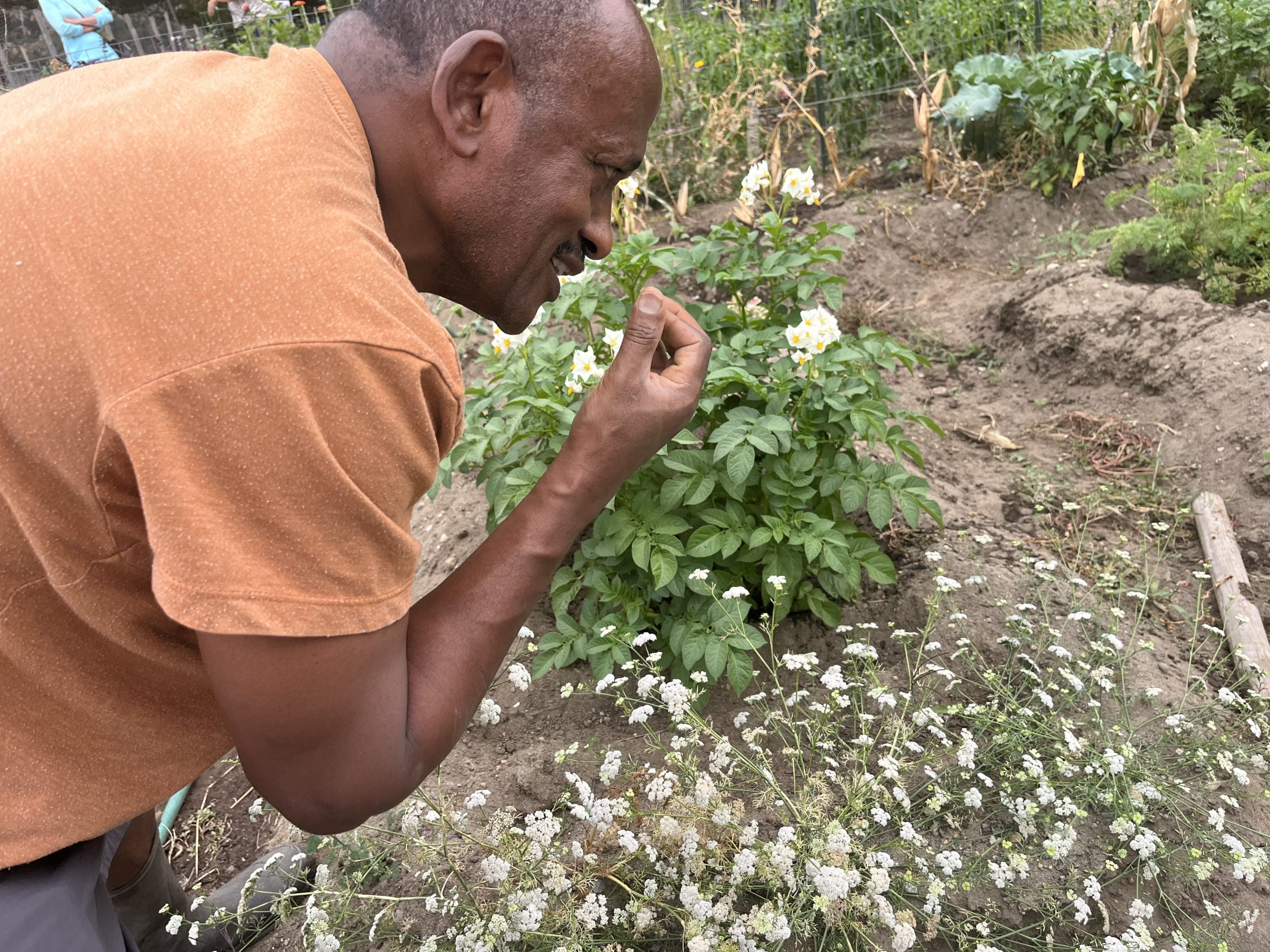
Yes, this very small seed. This is the spice, we mix with black seed and we grind it together to make a tasty spread for bread. It is ajwaian (carom seed). When you smell it, it has a good smell. Black seed is another spice we use in different ways to prepare butter. For butter, we don’t use directly from the store for cooking. We mix other spices in it to add more flavor. That is our tradition. We also put it in bread and different meat and vegetable sauces. They use different spices, but out of all of them, ajwaian is the one! I also have another plant, the scientific name is Ruta chalepensis. It is not just grown in my country, it is common in America too. We use it for flavor when we drink coffee and tea. Cabbage is also very common in Ethiopia, and it is almost the same here. I think my favorite plant to grow is cabbage as well as garlic. I get a lot of garlic…garlic is very important. There is another plant we use for oil, safflower. We plant it next to the fence. It is a soldier! It protects the garden because it is very sharp! In my country, if garbanzo is in the field, everybody wants to take it. So, we plant this one by the fence. When we eat it, we roast it with barley and garbanzo. We also have flax, I Iike that one. We grind it, add water and it is like juice. During our fasting time it is very nice. I am trying it now, if it grows well, I will plant more next year.
How has the garden helped you find community and connection with neighbors
There are so many different communities here. Most gardeners here are Mexican, Spanish speakers, then white Americans, there are some gardeners from my country too. But we are all friends, and we help each other. We always say hello. If someone is working with a heavy thing, I am happy to go help them. They teach some words in Spanish, for example they tell us different words for plants like chick pea, in their language is garbanzo. We all work together to take care of the garden, for example, this gravel pathway. We all did this together two or three weeks ago. We love each other. We respect each other. It is very nice. Like the sign, we are all welcome.
